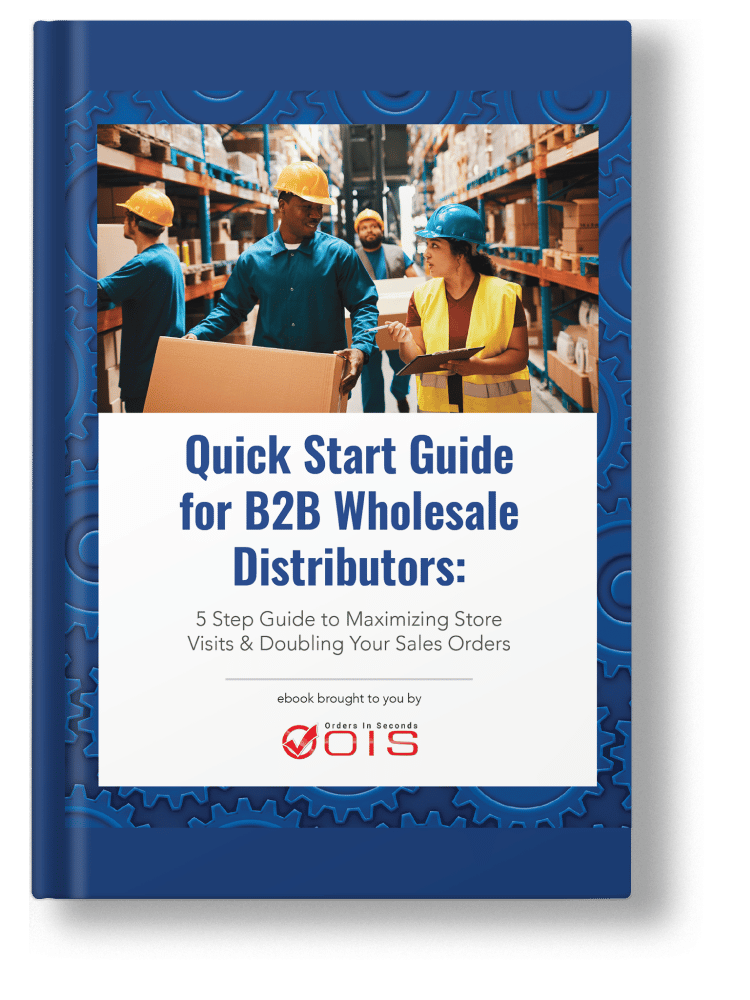Looking to leverage selective distribution for your products but not sure where to start? Selective distribution may be your strategy for maintaining brand prestige while achieving targeted market penetration. In this article, we’ll unpack how selective distribution offers balance and control, share real-world examples of its success, and discuss how to navigate the challenges and complexities that come with it. Whether for luxury goods or niche markets, learn how to employ this approach to benefit your brand strategy.
Understanding Selective Distribution
Selective distribution is a strategy where businesses carefully choose a limited number of retailers or distributors to sell their products. This approach balances control and market reach, ensuring brand consistency while reaching target customers. By partnering with select outlets that align with their brand image—like high-end stores for luxury goods—companies maintain quality, exclusivity, and customer experience.
It’s a middle ground between exclusive distribution (very few outlets) and intensive distribution (widespread availability), offering strategic flexibility for brands aiming to protect their reputation while expanding their market presence.
Key Takeaways
- Selective distribution is a strategic model where companies choose a limited and deliberate number of retail outlets to sell their products, aiming to control brand image, enhance customer experience, and cater to specific audience preferences while allowing some level of market reach.
- Key components of an effective selective distribution strategy include choosing the right retail partners based on objective and qualitative criteria, understanding the target audience, establishing distribution criteria in alignment with the brand’s marketing goals, and continuously monitoring performance through KPIs.
- Selective distribution must be balanced with other distribution strategies like exclusive and intensive distribution to achieve optimal market coverage, and when implementing this strategy, companies must navigate legal and regulatory challenges, manage retail partner relationships, and adapt to technological and consumer behavior changes.
Table of Contents
- The Essence of Selective Distribution
- Key Components of an Effective Selective Distribution Strategy
- Balancing Selective Distribution with Other Distribution Strategies
- Real-World Examples of Selective Distribution Success
- Overcoming Challenges in Selective Distribution
- Summary
- Frequently Asked Questions
- Enhance Your Distribution Strategy with Orders in Seconds
The Essence of Selective Distribution

Selective distribution is a strategic approach where a company chooses a limited set of outlets to sell its products through a selective distribution model. The aim is to:
- Control brand image, quality, and the environment of the point of sale
- Enhance brand perception and customer experience
- Offer a level of control over the products that allows for strong growth
- Enable expansion to a specific audience through a selective distribution plan, which utilizes selective distribution means
This marketing strategy can be highly effective in achieving business goals.
What’s more, selective distribution is not limited to physical stores. It is also possible under certain conditions to extend the strategy to the digital realm, giving brands a broader reach.
Defining Selective Distribution
So what exactly is a selective distribution strategy? It is a method where companies carefully select a limited number of retail partners to sell their products. The strategy is a balance between exclusive distribution, which is more restrictive, and intensive distribution that aims for market saturation. This approach helps companies guarantee the resale quality of their products and, at the same time, allows them to maintain a certain level of market reach. Objective and qualitative criteria such as the service range and profit margin form the fundamental conditions of a selective distribution contract.
The Role of Selective Distribution in Marketing
In the realm of marketing, selective distribution plays a pivotal role. It’s a powerful tool that allows brands to grow by enabling them to experiment with different marketing approaches and refine their focus on specific target audiences. For luxury products, a highly selective distribution strategy maintains the exclusivity and brand image by controlling their market presence.
Moreover, selective distribution strategies:
- Counteract ‘free-riding’ and create incentives for retailers to compete on customer service rather than price alone
- Enhance the overall customer experience
- Align with business objectives by carefully selecting distribution channels based on target market preferences and product characteristics.
Key Components of an Effective Selective Distribution Strategy

An effective selective distribution strategy involves:
- Choosing the right retail partners
- Understanding the target audience
- Establishing distribution criteria tailored to the brand’s marketing goals
- Evaluating potential retail partners
- Negotiating contracts
- Developing a comprehensive plan that aligns with the brand’s vision and objectives.
Moreover, the selection of retail partners should involve an assessment of their location and the expertise of their sales staff to ensure consistency with the brand’s image and the fulfillment of customer expectations. Lastly, ongoing success in selective distribution relies on regular performance monitoring and the agility to make strategic adjustments as needed.
Target Audience Identification
Identifying the target audience is a crucial step in designing an effective selective distribution strategy. It involves understanding the demographics, preferences, and needs of the target audience. This analysis is vital for determining the proper distribution channels that will effectively reach and serve the consumers.
Selective distribution often includes strategies that align with customer purchasing preferences and behaviors, catering to different types of customers like individual consumers or business clients. Thus, determining the target audience is not only about who the customers are but also how they make their purchasing decisions. This information aids in locating channels and stores that can best reach and serve the consumers effectively, ensuring the selective distribution strategy contacts the target audience successfully.
Criteria for Selecting Retail Partners

The selection of retail partners in a selective distribution network is a critical process. It’s not just about who sells the most but also about who can best represent the brand and its values. Luxury brands, for instance, select retail partners based on objective, qualitative criteria uniformly and non-discriminatorily, ensuring product quality remains intact.
The nature of the product and the ability of channel partners to manage those specific products are also taken into consideration. Moreover, geographically strategic retail locations combined with the ability to target various customer segments and manage distinctly different models and features are central to the selection process in selective distribution. Therefore, retail partners in selective distribution are chosen based on quantitative criteria such as their sales volume, reputation, and the customer base they serve.
Monitoring and Evaluating Performance
Regular tracking and analysis of key performance indicators (KPIs) are essential for assessing distribution network performance and making strategic adjustments. Some important KPIs to consider are:
- Sales volume
- Average order size
- Customer acquisition costs
- Delivery time
- Market share
These metrics provide insightful data that validates distribution choices and indicate when adjustments to the strategy are required.
Technological changes have increased the reach and capabilities of selective distribution, requiring continuous monitoring and potential strategy refinement. Moreover, when expanding into international markets, varying trade regulations, tariffs, customs procedures, and taxes must be navigated, impacting the effectiveness of selective distribution strategies. Thus, effective performance measurement tools combined with a proactive approach to market changes ensure the continued success of a selective distribution strategy.
To support these actions for sales success, download our ebook “Double Your Sales Orders in 5 Steps”. This guide offers strategies to optimize performance and maximize growth. Click below to get it for free.

Double Your Sales Orders in 5 Steps
This exclusive eBook is packed with real-world, data-driven concepts that can help maximize your store visits and double your sales. Get it for FREE – Today!
Balancing Selective Distribution with Other Distribution Strategies

While selective distribution offers numerous advantages, it’s important to balance it with other distribution strategies like exclusive and intensive distribution for optimum market coverage. This balance is crucial for achieving desired sales volumes and maintaining brand exclusivity.
An exclusive distribution strategy involves a company choosing a single dealer or retailer within a specific locality to sell its products, which is often utilized by premium brands to create a sense of exclusivity.
On the other hand, while exclusive distribution limits product availability to one or only a few outlets, exclusive and selective distribution broadens this by allowing products to be sold through a limited number of handpicked outlets. This strategy can create quality perception and demand similar to exclusive distribution but typically engages more retailers to expand market presence.
In contrast, intensive distribution strategies aim to maximize product availability by selling through as many outlets as possible, often applied to everyday convenience products. Therefore, to implement a selective distribution strategy effectively, companies need to strike a balance between upholding brand exclusivity and ensuring sufficient market penetration to achieve desired sales volumes.
Exclusive Distribution vs. Selective Distribution
Exclusive distribution creates a sense of scarcity and exclusivity, offering better control of the customer’s experience, targeting a specific audience, and protecting the product image. However, this approach has its risks, such as over-reliance on the selected distributor, financial instability of the retailer, and potential impacts on the brand image.
Since exclusive distribution limits market reach, it is critical to track product performance closely, necessitating adjustments based on sales data and customer feedback. On the contrary, selective distribution, as we’ve discussed, expands this reach by allowing products to be sold through a limited number of handpicked outlets, offering a balance between market reach and brand control.
Intensive Distribution vs. Selective Distribution
Intensive distribution, on the other hand, aims to provide widespread product availability by placing products in as many retail outlets as possible. This approach facilitates impulse buying by ensuring products are conveniently available where consumers shop frequently. However, a potential drawback of intensive distribution is that it may dilute brand prestige and can lead to a loss of control over the brand’s retail environment.
Thus, selective distribution offers the best of both worlds. It allows companies to maintain control over their brand image while reaching a broader customer base. It’s the perfect balance between intensive distribution, which focuses on market saturation, and exclusive distribution, which prioritizes brand exclusivity.
Real-World Examples of Selective Distribution Success

Selective distribution strategies have been effectively used across various product sectors such as cars, clothing, and watches. A selective distribution example is Sony, which employs this strategy for its televisions, making different models available through specific retailers like Circuit City, Best Buy, and Walmart. Similarly, Guess has successfully implemented a selective distribution approach across Europe to enhance its brand’s market presence in the fashion sector.
In the watch industry, Titan represents a brand that takes advantage of selective distribution to reach its desired consumers. These examples illustrate how different companies, regardless of their industry, can leverage selective distribution to target specific customer segments and optimize their market potential.
Luxury Brands and Selective Distribution
Luxury brands particularly benefit from selective distribution strategies. They use these strategies to uphold brand exclusivity and appeal to upscale customers. For instance, expensive perfumes and designer purses often use exclusive distribution to manage their brand image and sustain premium pricing.
Selective distribution agreements empower luxury brands to enforce quality control over the dealers who market and sell their products, which is a significant advantage for products at the higher end of the market. Hence, selective distribution is a powerful tool for luxury brands looking to maintain their brand exclusivity while reaching a wider audience.
Niche Market Products and Selective Distribution
Selective distribution can also be a valuable approach for niche market products. It allows companies to target specific customer segments, thus optimizing their market potential. Companies with complex products, such as high-end photography equipment and audio equipment, can leverage selective distribution to reach specific niche markets.
Niche markets also include those for:
- medical devices
- industrial machinery
- laboratory equipment
- professional-grade tools
- RC drones and vehicles
- home appliances
By using selective distribution, companies specifically target groups within these niche markets to optimize their market potential. Thus, selective distribution provides an effective approach for companies operating in niche markets, enabling them to reach their target audiences more effectively.
While selective distribution offers numerous benefits, it does come with its own set of challenges. Businesses faced with challenges in selective distribution due to globalization require research and planning to understand trade regulations, tariffs, customs procedures, taxes, and cultural preferences in new markets. The rise of e-commerce has necessitated that companies develop distribution strategies integrating online sales and delivery channels, requiring coordination of product placement and inventory across online marketplaces.
Moreover, environmental and social responsibilities impact distribution strategies as companies face increasing pressure to adopt sustainable logistics, packaging, and waste management practices. Businesses must also be adaptable and responsive to changing customer preferences and demands, implementing:
- flexible and efficient distribution networks
- innovative last-mile delivery solutions
- real-time tracking and visibility technologies
- customer-centric return and exchange processes
These strategies can help improve customer satisfaction and drive business growth.
In the midst of it all, remember to continually assess your distribution processes and ensure smooth operations. Explore “Avoid the Top 5 Mistakes Wholesale Distributors Make” for invaluable insights to keep your business on track and ahead of the curve.
Legal and Regulatory Considerations
Selective distribution intersects with legal and regulatory frameworks. Selective distribution arrangements must adhere to EU competition law, which mandates businesses to independently assess the compatibility of their commercial agreements with the regulations. To be exempt from Article 101(1) prohibition, selective distribution systems must not exceed necessary selection criteria and should enhance non-price competition.
Various legal challenges can arise, such as when Guess faced penalties for breaching EU competition law by engaging in anti-competitive practices within its selective distribution system. Therefore, retail partners selection in selective distribution must be based on objective, justifiable criteria to avoid antitrust regulations conflicts.
Furthermore, companies expanding into international markets must consider various factors, including:

Avoid the Top 5 Mistakes Wholesale Distributors Make
- Trade regulations
- Tariffs
- Custom procedures
- Taxes
- Cultural preferences
These factors can complicate selective distribution strategies.
Managing Retail Partner Relationships
Managing relationships with retail partners is a crucial aspect of a successful selective distribution strategy. Maintaining strong relationships provides benefits such as access to new markets, cost savings, and improved efficiency. Moreover, managing relationships with a limited and carefully selected number of retail partners is essential to ensure the success of the selective distribution strategy.
An effective selective distribution strategy seeks to enhance brand image, increase profit margins, and cultivate strong relationships with selected retailers for better brand control. In response to e-commerce growth, companies must work closely with retail partners to ensure coordinated product placements, inventory management, and to maintain a consistent brand experience across platforms.
In summary, selective distribution is a strategic approach that offers numerous benefits for businesses. It allows companies to control their brand image, reach a specific audience, and manage the quality of their product distribution. However, to maximize its benefits, businesses need to identify their target audience, select the right retail partners, and monitor performance regularly. Moreover, it’s crucial to balance selective distribution with other strategies and overcome challenges such as legal and regulatory considerations and managing retail partner relationships. With the right approach and strategic planning, selective distribution can be a game-changer for businesses aiming for sustainable growth and success.
Frequently Asked Questions
What is the Weeks of Supply (WOS) formula?
The Weeks of Supply (WOS) formula calculates how many weeks the current inventory will last based on the average weekly sales rate. It is obtained by dividing the current inventory quantity by the average weekly consumption rate.
Selective distribution is a strategic approach used by companies to limit their product sales to a specific set of outlets in order to maintain control over brand image, quality, and the sales environment. This approach allows companies to carefully manage their distribution channels.
Selective distribution strikes a balance between exclusive distribution, which involves a single dealer, and intensive distribution, which aims for widespread availability in many retail outlets. It allows companies to strategically control their product’s availability.
Why is identifying the target audience important in selective distribution?
Identifying the target audience is important in selective distribution because it helps companies understand the demographics, preferences, and needs of the audience, allowing for effective distribution channel determination.
Some challenges in selective distribution include navigating trade regulations, taxes, and cultural preferences in new markets, as well as coordinating product placement and inventory in the e-commerce landscape. Globalization and the rise of online marketplaces introduce additional complexities.
Retail partners in a selective distribution strategy are chosen based on factors like sales volume, customer base, reputation, and product management skills, as well as the geographical location of their outlets and the expertise of their sales staff. This comprehensive selection process ensures that the right partners are chosen to represent the brand.
Enhance Your Distribution Strategy with Orders in Seconds
Whether you’re navigating a selective distribution model or exploring intensive, exclusive, or hybrid approaches, technology is key to staying competitive.
With Orders in Seconds’ cutting-edge apps like OIS Pro App and OIS eCommerce, simplify order taking for your field sales reps and impress your B2B buyers. Explore the possibilities and transform your distribution network today.
Schedule a demo to explore how OIS solutions can optimize your wholesale distribution processes!






